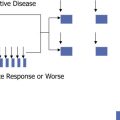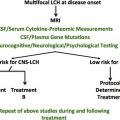Macrophage activation syndrome (MAS) is a potentially life-threatening complication of rheumatic disorders that occurs most commonly in systemic juvenile idiopathic arthritis. In recent years, there have been several advances in the understanding of the pathophysiology of MAS. Furthermore, new classification criteria have been developed. Although the place of cytokine blockers in the management of MAS is still unclear, interleukin-1 inhibitors represent a promising adjunctive therapy, particularly in refractory cases.
Key points
- •
Macrophage activation syndrome (MAS) is a potentially life-threatening complication of rheumatic disorders, particularly systemic juvenile idiopathic arthritis.
- •
Although the pathophysiology of MAS is unclear, it is characterized by a dysfunctional immune response that is similar to that seen in other forms of hemophagocytic lymphohistiocytosis.
- •
Because MAS may pursue a rapidly fatal course, prompt recognition of its clinical and laboratory features and immediate therapeutic intervention are imperative.
- •
Recently, a set of classification criteria for MAS complicating systemic juvenile idiopathic arthritis has been developed through a multinational collaborative effort.
- •
The role of cytokine inhibitors in the management of MAS deserves further studies, although recent data about interleukin-1 antagonists are promising.
Introduction
The term macrophage activation syndrome (MAS) refers to a potentially life-threatening complication of rheumatic disorders that is seen most commonly in systemic juvenile idiopathic arthritis (sJIA) and in its adult equivalent, adult-onset Still disease, although it is encountered with increasing frequency in systemic lupus erythematosus of either childhood or adult onset and Kawasaki disease. In spite of recent reports in periodic fever syndromes, the occurrence of MAS in other autoinflammatory diseases is rare.
This article summarizes the characteristics of MAS occurring in the context of sJIA and discusses the recent advances in classification systems and management.
Introduction
The term macrophage activation syndrome (MAS) refers to a potentially life-threatening complication of rheumatic disorders that is seen most commonly in systemic juvenile idiopathic arthritis (sJIA) and in its adult equivalent, adult-onset Still disease, although it is encountered with increasing frequency in systemic lupus erythematosus of either childhood or adult onset and Kawasaki disease. In spite of recent reports in periodic fever syndromes, the occurrence of MAS in other autoinflammatory diseases is rare.
This article summarizes the characteristics of MAS occurring in the context of sJIA and discusses the recent advances in classification systems and management.
History, nomenclature, and classification
The first description of this condition dates back to 1985, when Hadchouel and colleagues reported a clinical syndrome of acute hemorrhagic, hepatic, and neurologic abnormalities in patients with sJIA. The term MAS was proposed in 1993 by the same group of investigators, who found evidence of activation of the monocyte-macrophage system in patients with the syndrome and noticed that its clinical features were very similar to those observed in hemophagocytic lymphohistiocytosis (HLH). The recognition that MAS belongs to the spectrum of HLH has subsequently led to a proposal to rename it according to the contemporary classifications of HLH and to classify it among the secondary, or acquired, forms of HLH.
Epidemiology
The incidence of MAS in sJIA is unknown. It is estimated that around 10% of children with this disease develop overt MAS, but recent data suggest that the syndrome may occur subclinically or in mild form in another 30% to 40% of cases. In a recent multinational study of 362 patients, MAS occurred more frequently in girls, with a female/male ratio of 6:4. This slight female predominance contrasts with the 1:1 sex ratio typical of sJIA. The median time interval between the onset of sJIA and the occurrence of MAS was 4 months, and MAS was diagnosed simultaneously with sJIA in 22% of the patients. The demographic, clinical, laboratory, and histopathologic features of MAS were overall comparable among patients seen in different geographic areas.
Pathogenesis
An in-depth discussion of the pathogenesis of MAS is beyond the scope of this article, and has been covered recently elsewhere. However, a few developments are worth noting. The starting point for most pathogenetic studies is the notion that MAS is characterized by a dysfunctional immune response that is similar to that seen in other forms of HLH. The prototype of these is familial HLH (FHLH), which is a constellation of rare autosomal recessive immune disorders resulting from homozygous deficiency in cytolytic pathway proteins. In FHLH, the uncontrolled expansion of T cells and macrophages has been attributed to diminished natural killer (NK) cell and cytotoxic T cell function, caused by mutations in particular genes whose products are involved in the perforin-mediated cytolytic pathway. These mutations cause profound impairment of cytotoxic function, which, through mechanisms that have not yet been fully elucidated, leads to an exaggerated expansion and activation of cytotoxic cells with hypersecretion of proinflammatory cytokines, which ultimately results in hematologic alterations and organ damage. Recent evidence suggests that defects in killing leads to prolonged interaction between the cluster of differentiation 8 (CD8) T cell or NK cell and the infected target cell, resulting in a proinflammatory cytokine storm.
Although the pathophysiology of MAS is less clear, it probably involves related pathogenic pathways. It has recently been shown that, as in FHLH, patients with MAS may have functional abnormalities of the exosome degranulation pathway involved in perforin-mediated cytolysis. Furthermore, several studies suggest the presence of some genetic overlap between MAS and FHLH. The same biallelic mutations in the MUNC13-4 gene reported in FHLH have been identified in some patients with sJIA with MAS. Some of these mutations have been suggested to function as monoallelic dominant negative mutations disrupting cytolyisis. Interferon regulatory factor 5 (IRF5) gene polymorphisms were also found to be risk factors for MAS in patients with sJIA. Whole-exome sequencing has led to the discovery of rare protein-altering variants in known HLH-associated genes as well as in new candidate genes.
In spite of the compelling evidence for a pathogenetic role of defects in cytotoxic cell function in FHLH, in many instances of MAS no such defects have been identified, or they have been found to have only variable penetrance. This finding has prompted the search for alternative causative mechanisms. Recently, a murine model of MAS induced by repeated stimulation of Toll-like receptor (TLR)-9 in genetically intact mice suggested that situations of continual activation of TLR-9 may reproduce the environment that leads to the development of MAS in the absence of known cytolytic defects. Certain aspects of the disease in this model were interferon gamma (IFN-γ) dependent, establishing a connection to FHLH.
The key role of IFN-γ in HLH was previously highlighted by the observation that, in perforin-deficient mice, only the antibody directed to IFN-γ, and not to other cytokines tested, prolonged survival and prevented the development of histiocytic infiltrates and cytopenia. Furthermore, a study of liver biopsies in patients with various forms of HLH, including MAS, revealed extensive parenchymal infiltration by IFN-γ–producing CD8 T lymphocytes and hemophagocytic macrophages secreting tumor necrosis factor (TNF) alpha and interleukin (IL)-6. Evidence has been provided that the hyperproduction of IL-18 (which potently induces Th-1 responses and IFN-γ production and enhances NK cell cytotoxicity) and an imbalance between levels of biologically active free IL-18 and those of its natural inhibitor (the IL-18 binding protein), may be involved in secondary hemophagocytic syndromes, including MAS.
Another intriguing observation underscores the crucial regulatory role of IL-10 in the MAS process. Mice exposed to repeated TLR-9 stimulation coupled with blockade of the IL-10 receptor developed much more fulminant disease, including hemophagocytosis. This finding has led to the hypothesis that the combined immunologic abnormality of hyperactive TLR/IL-1β signaling and decreased IL-10 function may be responsible for a predisposition to MAS. Altogether, the results of these studies highlight a critical importance of IFN-γ and IL-10 in the pathophysiology of HLH/MAS and provide the rationale for the modulation of the axes of these cytokines to treat disease.
Clinical, laboratory, and histopathologic features
The clinical presentation of MAS is generally acute and may occasionally be dramatic, with the rapid development of multiorgan failure that requires the admission of the patient to the intensive care unit (ICU). Fever is the main clinical manifestation of MAS. A useful clue to suspect the occurrence of MAS or to discriminate it from a flare of the underlying disease in a child with sJIA may be provided by the shift of fever from the high-spiking intermittent typical quotidian pattern of active sJIA to a continuous unremitting pattern characteristic of MAS. Other common clinical findings are hepatosplenomegaly and generalized lymphadenopathy, which are often present in active sJIA, but may worsen acutely at onset of MAS. Central nervous system (CNS) dysfunction is seen in approximately one-third of MAS cases and may cause lethargy, irritability, disorientation, headache, seizures, or coma. Importantly, CNS symptoms may uncover a coexistent thrombotic thrombocytopenic purpura. Approximately 20% of patients with MAS experience hemorrhagic manifestations, which may vary from easy bruising to purpura to mucosal bleeding. Heart, lung, and kidney failure is usually seen in the sickest patients, who are more likely to require admission to the ICU or have a fatal outcome. Recently, multiorgan failure, together with CNS involvement, hemoglobin level less than or equal to 7.9 g/dL, and age at onset of MAS greater than 11.5 years, was found to be an independent predictor of severity of the clinical course of MAS. A few patients have pulmonary arterial hypertension, which is a serious, and often fatal, complication of sJIA that has frequently been observed in association with MAS.
Typical laboratory abnormalities of MAS include a profound decrease in all 3 blood cell lines, with leukopenia, anemia, and thrombocytopenia. Liver function tests disclose frequently high levels of serum transaminases and, occasionally, increased bilirubin level. Moderate hypoalbuminemia is common. There is often an abnormal coagulation profile, with prolongation of prothrombin and partial thromboplastin times, hypofibrinogenemia, detectable fibrin degradation products, and increase in D-dimers. Additional laboratory findings include increased levels of triglycerides, lactate dehydrogenase, and ferritin. Serum ferritin is a valuable diagnostic tool, because the onset of MAS is often marked by a sharp increase of this biomarker, often to more than 5000 to 10,000 ng/mL. Measurement of the ferritin level over time may also assist in monitoring the course of disease activity, in assessing therapeutic response, and in predicting prognosis. It has recently been proposed that the measurement of the soluble IL-2 receptor alpha chain (also known as soluble CD25) and soluble CD163, which may reflect the degree of activation and expansion of T cells and macrophages, respectively, are promising diagnostic markers for MAS and may help to identify subclinical forms. However, these tests are not routinely performed or available in most pediatric rheumatology centers.
Another useful diagnostic hint is that patients may show a paradoxic improvement in the underlying inflammatory disease at the onset of MAS, with disappearance of signs and symptoms of arthritis and a decrease in the erythrocyte sedimentation rate (ESR). The latter phenomenon is mainly related to the hypofibrinogenemia secondary to fibrinogen consumption and liver dysfunction. The ferritin/ESR ratio is a valuable tool in assessing MAS in sJIA. Although the ESR decreases, the C-reactive protein level continues to increase with worsening MAS, and it has been shown that complement levels also decrease in patients with sJIA with active MAS.
It is widely recognized that early suspicion of MAS is most commonly raised by the detection of subtle laboratory alterations, whereas clinical symptoms are often delayed. However, the change in laboratory values over time is known to be more relevant for making an early diagnosis than their decrease below or increase above a certain threshold, as defined by current diagnostic guidelines (discussed later). The performance of laboratory markers in the detection of MAS has been scrutinized recently by evaluating the change in value that takes place during the course of the syndrome. The tests that showed a percentage change greater than 50% between pre-MAS visit and MAS onset were the following: platelet count, aspartate and alanine aminotransferases, ferritin, lactate dehydrogenase, triglycerides, and D-dimer.
A characteristic feature of MAS may be seen on bone marrow examination, which reveals numerous morphologically benign macrophages showing hemophagocytic activity. Such cells may infiltrate the lymph nodes and spleen as well as many other organs in the body and may be responsible for several clinical manifestations of the syndrome. However, in patients with MAS, the bone marrow aspirate does not always show hemophagocytosis (present in approximately 60% of patients). Therefore, failure to reveal hemophagocytosis does not exclude the diagnosis of MAS.
Box 1 shows the main clinical and laboratory features of MAS complicating sJIA. The comparison of the features of active sJIA and MAS is presented in Table 1 .
Clinical features
Nonremitting fever
Hepatomegaly
Splenomegaly
Lymphadenopathy
Hemorrhagic manifestations
Encephalopathy
Laboratory features
Cytopenias
Abnormal liver function tests
Coagulopathy
Decreased ESR
Hypertriglyceridemia
Increased lactate dehydrogenase level
Hyponatremia
Hypoalbuminemia
Hyperferritinemia
Increased soluble IL-2 receptor alpha (or soluble CD25)
Increased soluble CD163
Histopathologic features
Macrophage hemophagocytosis in the bone marrow
Increased CD163 staining of bone marrow
| Feature | sJIA | MAS |
|---|---|---|
| Fever pattern | Intermittent | Continuous |
| Rash | Maculopapular, evanescent | Petechial or purpuric |
| Hepatosplenomegaly | + | ++ |
| Lymphoadenopathy | + | ++ |
| Splenomegaly | + | ++ |
| Arthritis | ++ | − |
| Serositis | + | − |
| Hemorrhages | − | + |
| Encephalopathy | − | + |
| White blood cells and neutrophils | ↑↑ | ↓ |
| Hemoglobin | Normal or ↓ | ↓ |
| Platelets | ↑↑ | ↓ |
| ESR | ↑↑ | Normal or ↓ |
| Liver transaminases | Normal | ↑↑ |
| Bilirubin | Normal | Normal or ↑ |
| Lactate dehydrogenase | Normal or ↑ | ↑↑ |
| Triglycerides | Normal | ↑ |
| Prothrombin time | Normal | ↑ |
| Partial thromboplastin time | Normal | ↑ |
| Fibrinogen | ↑ | ↓ |
| D-dimer | ↑ | ↑↑ |
| Ferritin | Normal or ↑ | ↑↑ |
| Soluble IL-2 receptor alpha (or soluble CD25) | Normal or ↑ | ↑↑ |
| Soluble CD163 | Normal or ↑ | ↑↑ |
Triggering factors
Although most instances of MAS lack an identifiable precipitating factor, the syndrome has been associated with several triggers, including a flare of the underlying disease; toxicity of aspirin or other nonsteroidal antiinflammatory drugs; viral, bacterial, or fungal infections; a second injection of gold salts; or a side effect of second-line or biologic medications. Severe episodes of MAS have been observed among patients who had undergone autologous bone marrow transplantation for sJIA refractory to conventional therapies.
In the aforementioned multinational patient series, MAS was reported to occur most frequently (51.7%) in the setting of active sJIA or during an sJIA flare. In 22.2% of the patients, MAS was diagnosed simultaneously with sJIA. An infectious trigger was detected in 34.1% of patients. Epstein-Barr virus (EBV) was the most common causative agent (25% of cases) among the 24 patients in whom the specific cause or the type of infection was identified or reported. In 3.8% of cases MAS was thought to be related to a medication side effect: 8 of the 11 instances involved a biologic agent, which was an IL-1 or IL-6 inhibitor in all but 1 case.
Induction of MAS by biologic agents that inhibit proinflammatory cytokines known to be involved in its pathogenesis is a paradoxic phenomenon. Suggested explanations include the increased rate of infections (which, in turn, may trigger MAS) associated with biologic therapies or the induction of an unbalance between upregulation and downregulation of the various molecules that are part of the cytokine network. However, the proinflammatory cytokines might also be overwhelming the therapy because increasing IL-1 blockade has resolved MAS in children with sJIA who developed MAS while on IL-1 inhibitory therapy.
Stay updated, free articles. Join our Telegram channel

Full access? Get Clinical Tree






